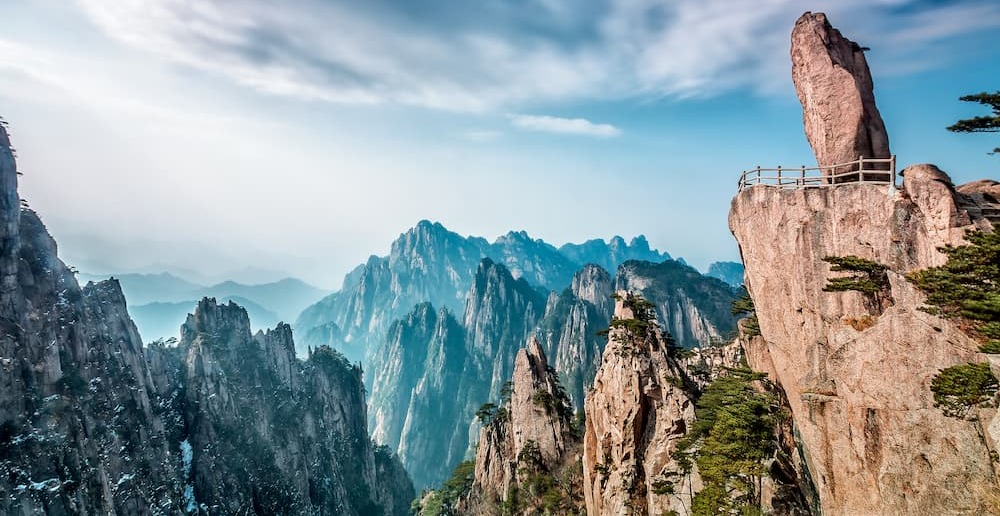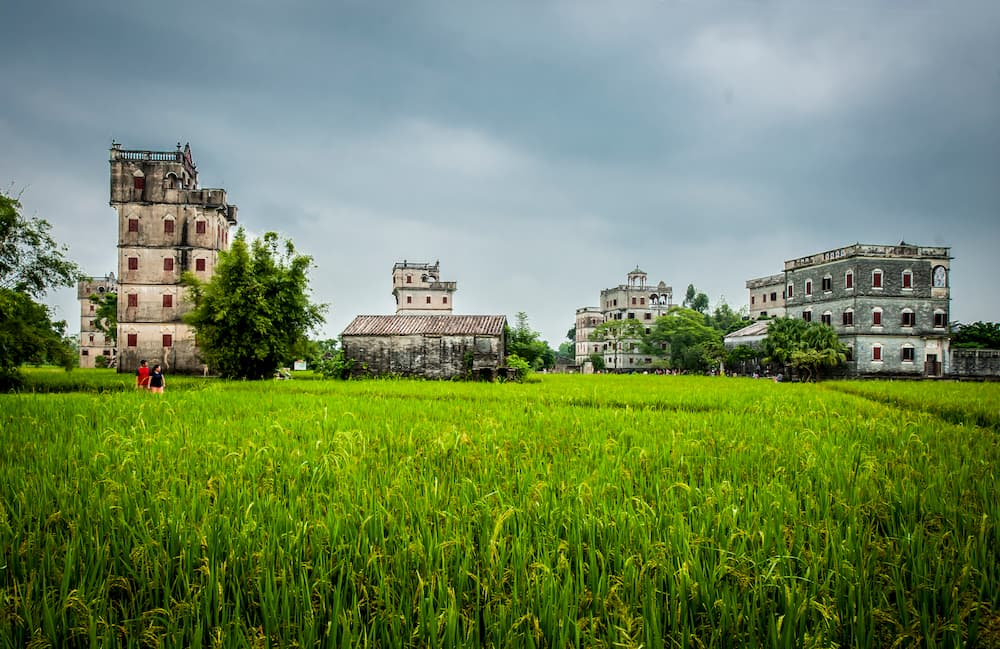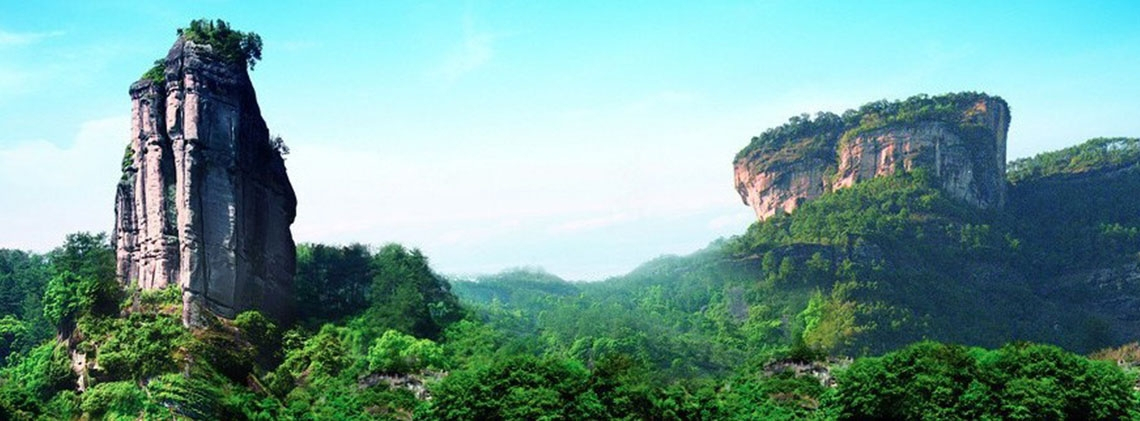
Mount Huangshan
Splendid
Chi Culture
Topic
Mount Huangshan
In ancient times, Huangshan (Mount Huang, literally “yellow mountain”) was known as Yishan (Mount Yi, literally “black mountain”) after its blue-black rock. In 747, the name was changed by imperial order to Huangshan, an alteration believed done to emphasize an association with the legendary Huangdi (Yellow Emperor), and was not, as might be supposed, derived from any aspect of its physical appearance. Located in southern Anhui province in what is known as the Huizhou region, in particular in the middle of Taiping county (today’s Huangshan district), Xi county, Yi county, and Xiuning county, the greater Huangshan area is famous for its ever-changing scenery of mountains and clouds, granite peaks, pine trees, and hot springs which together create magnificent, strange, illusory, precipitous, or serene views. These various features have fascinated generations of visitors. In 1990, Huangshan was inscribed by the United Nations Educational, Scientific and Cultural Organization as a World Heritage site with the English name of Mount Huangshan.
The Huangshan mountain range has many peaks; there are 36 higher ones and 36 lower ones. Lotus Peak (Lianhua feng, 1,864 meters), Bright Summit Peak (Guangming ding, 1,840 meters), and Celestial Peak (Tiandu feng, literally “peak of heaven capital,” 1,829 meters) are the tallest and most celebrated. Lotus Peak is high and elegant, Bright Summit Peak is high but flattened at its top, and Celestial Peak is also high but with a precipitous summit. These three distinctive peaks constitute the foundation of Huangshan’s scenic layout.
Among the many marvelous and memorable views to be seen at Huangshan the most representative ones are those which feature its strange pines, grotesque rocks, “sea of clouds’ (as viewed from above), and hot springs. These are known as the “four wonders of Huangshan.” The Huangshan pine (Pinus hwangshanensis) is named after Mount Huangshan. Because of the special geographical circumstances of their habitat, pines growing at Huangshan are influenced by sunshine, clouds, mist, wind, and frost all at the same time so they develop in crooked but attractive shapes. These pines are considered an example of vigor to be admired because they manage to grow and thrive in such harsh conditions. Grotesque rocks of varied sizes and shapes are scattered throughout the mountain region. They attract admiration and attention due to their resemblance to a myriad of things. From atop various peaks viewers can often look down on a rippling “sea of clouds” over which neighboring mountain peaks loom like islands rising from water. But all this can vanish in an instant due to changes in atmospheric conditions. However, the hot springs at Huangshan are known for their perennially consistent character. Their warm waters are clear and rich in healthful carbonates. These “four wonders,” famous both domestically and internationally, attract tourists from all over the world.
Huangshan also has three famous waterfalls. The Character Ren (Renzi) Waterfall has two flows from one source, so it looks like the Chinese character 人 (ren, human) written by a calligrapher with a brush. Furthermore, in heavy rain, the two flows look like two dragons flying down over the rocks which enhances its appeal. The Hundred Zhang (Baizhang) Waterfall runs down from a cliff as high as a hundred zhang (one zhang is approximately 3.33 meters), hence its name. It looks like a long piece of white silk as it flows downward, and its spraying foam is powerful and striking, creating a memorable scene. As to the third famous waterfall, the Nine Dragon (Jiulong) Waterfall, its name derives from the nine huge rocks its water hits on its way down the mountain, each place forming a smaller waterfall and a lake so that it appears as if there nine dragons flying down from above.
If the weather stays sunny for long, these waterfalls, and especially the Hundred Zhang and the Nine Dragon become thin threads trickling down into lakes which are as calm as mirrors, creating another, if different landscape scene than when the falls are full of rushing water, exemplifying the ever-varying scenery of the resort.
Huangshan enjoys a large forest area and abundant rainfall. During summer and autumn, the weather is pleasantly cool and fit for the growth of animals and plants. There are more than 1,500 kinds of plants and one third of them are trees. There are more than 500 kinds of animals (including more than 170 kinds of birds and more than 300 kinds of vertebrates). Huangshan plays an important role in the research on Chinese animals and plants. Therefore, it has been called the “treasury of animals and plants in eastern China.”
The unique views of Huangshan have attracted generations of literati and refined scholars so that the region became a source of inspiration to many. Poets and writers created poems and travel journals about Mount Huangshan; artists painted it. Incomplete statistics indicate that there exist more than twenty thousand poems about Mount Huangshan dating from the High Tang era (713–765) to the late Qing period (ca. 1901–1911). A great number of these were written by famous literati. Travel journals about Mount Huangshan flourished during the Song (960–1127), Yuan (1271–1368), and Ming (1368–1644) dynasties when the culture and economy of southern Anhui known as the Huizhou region developed significantly. Literati who left important travel journals about their journey to this area include the Song dynasty scholar Wu Longhan (b. 1229), Yuan dynasty scholar Wang Zemin (1273–1355), Ming dynasty geographer Xu Xiake (1586–1641), and Qing dynasty scholars Qian Qianyi (1582–1664), Liu Dakui (1698–1779), Yuan Mei (1716–1797), and Pan Lei (1646–1708).
Many famous painters of later imperial China devoted themselves to capturing the essence of Huangshan’s beauty in their art. According to some sources, the Ming dynasty painters Wen Zhengming (1470–1559), Ding Yunpeng (1547–ca. 1628), and Zheng Zhong (fl. ca 1610–1648) all created paintings featuring the mountain, but authentic works of this subject by these have yet to be located. It is not until the late Ming-early Qing period (ca. mid-seventeenth century) and the emergence of the “Three Great Men of the Huangshan School”—Jian Jiang (1610–1660), Mei Qing (1623–1697), and Shi Tao (1642–1707) that confirmation exists of Mount Huangshan as a fully developed subject matter in the form of actual paintings by these and others of this school.
Famous mountains attract famous people while famous people admire famous mountains. Over the years Huangshan’s admirers have included geographers, painters, poets, politicians, scientists, and strategists. In ancient times, the poet Li Bai (also known as Li Bo, 701–762), the geographer Xu Xiake, and the Buddhist monk Pumen (1546–1625) climbed the mountain. Well-known modern scholars and writers including (in chronological order of birth) Tao Xingzhi (1891–1946), Guo Moruo (1892–1978), Yu Dafu (1896–1945), and Laoshe (1899–1966) also travelled there and composed poems and other literary works in which feature historical episodes, legends, and stories associated with Mount Huangshan.







